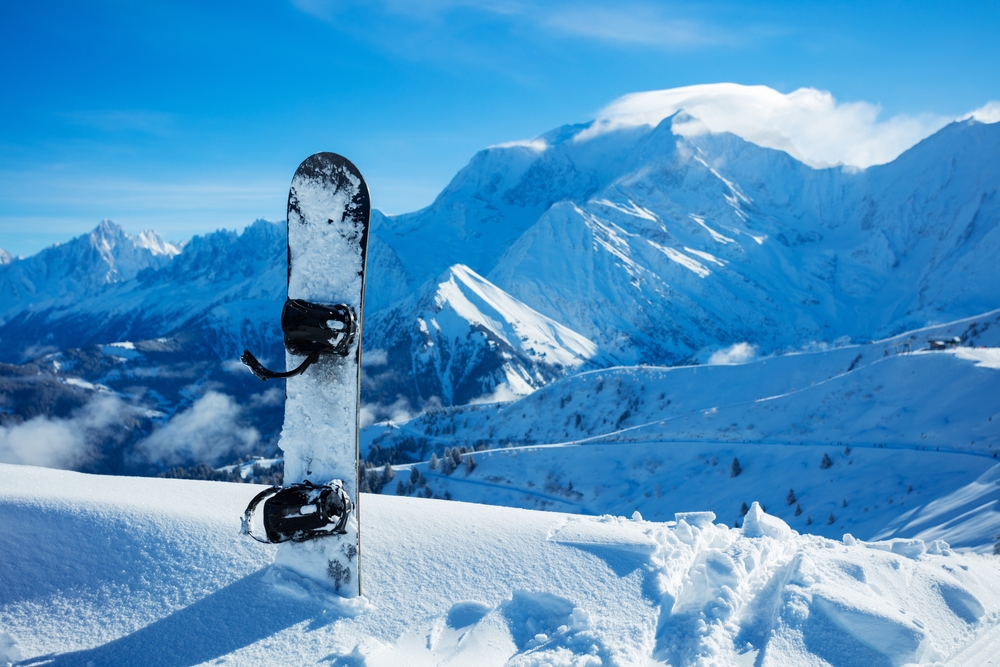
As winter comes to its inevitable end and the last vestiges of snow melt away, winter sports enthusiasts face a particular annual challenge: storing their equipment until next season.
Storing winter sports equipment correctly is critical to ensure that it stays pristine and is ready to be used safely and successfully the following year. Whether you love snowboarding, snowmobiling, cross-country skiing, or sledding down your local hills, the information below will help you correctly store your winter sports equipment. It’s brought to you by the storage experts at iStorage, who can help you store your winter sports equipment safely and securely if you don’t have enough space at home!
Ski and Snowboard Storage Tips
Many people prioritize properly storing their skis and snowboards. Indeed, properly storing skis and snowboards is a crucial step to prevent damage while stored, prolong the usable life of both, and ensure they perform well season after season. Below are a few tips to help you do that and ensure your skis and snowboards serve you well for many years.
- Clean your skis and snowboards before storage to remove salt, dirt, grime, and other substances.
- Apply a thick new coat of wax to protect the base of your skis and snowboards from drying out.
- Wait to remove the wax coating until the following season.
- Store your skis and snowboards in a storage area that doesn’t see large temperature fluctuations or is exposed to high humidity.
- Vertically hang your skis and snowboards when possible to prevent warping or damage.
- Ensure there is enough space between your skis or snowboards to prevent scratches, nicks, and warping.
Snowmobile Storage Tips

There are many more significant details when storing your snowmobile versus something simple like a snowboard or ski. They cost significantly more than most other winter equipment and take up substantially more space when stored. Considering these factors, the tips below will help you store your snowmobile well.
- Thoroughly wash off salt, dirt, and grime to prevent corrosion.
- Apply grease to all moving parts to protect against rust.
- Remove the battery, charge it, and store it in a cool, dry place.
- Lift the rear end to relieve pressure on the snowmobile’s tracks and suspension.
- Plug your snowmobile’s exhaust and intake openings to keep rodents out (Remember to remove these before riding again).
- Use a breathable cover on your snowmobile to protect against dust and scratches.
- Store snowmobiles in a dry, cool, and secure place to avoid temperature fluctuations, moisture, vandalism, and theft
Tips on Storing Winter Clothing

If you enjoy winter sports, you know winter sports clothing is essential to staying comfortable, warm, and safe on the slopes. Like most winter sports equipment, winter clothing can be expensive, so it’s a good idea to store it correctly so it lasts as many seasons as possible. The tips below will help you store your winter clothing like a professional.
- Wash or dry clean all winter clothing items to remove odors, stains, and body oils. These can attract pests and cause fabric damage over time, so proper cleaning is essential.
- Store your winter clothes in airtight bins or vacuum-sealed bags to protect them from moisture, dust, and insects.
- Avoid storing winter clothes in damp areas. A cool, dry closet or under-bed storage is ideal to prevent mold and mildew.
- Never store winter clothing in your basement due to the risk of mold and mildew. The same can be said for your attic, where the summer heat can ruin fabrics.
- Fold heavy knits and sweaters to prevent stretching. For delicate winter garments, use acid-free tissue paper to maintain shape and avoid creases.
- Use cedar blocks or sachets for a natural way to repel moths and keep clothes smelling fresh.
- Stay away from old-fashioned mothballs, filled with chemicals, smell terrible, and don’t work well.
- Label your storage containers clearly so you can find them easily next season.
- If using plastic bins, consider using containers with built-in ventilation to allow air circulation.
- Before storing, review your winter wardrobe and donate or sell items you didn’t wear or no longer need. This will keep your collection curated and manageable.
Storing Goggles
Goggles are another essential piece of equipment for enjoying winter sports. They are the easiest to store, but caution should be taken to ensure they stay pristine.
- Clean the lenses of your goggles with a soft cloth before storage.
- Store your goggles in a protective case to prevent scratching.
- Ensure your goggles are completely dry before storing them to prevent mold and mildew.
Preparing for the End of Ski Season

Although you might not want to see winter end, preparing for the end of ski season will ensure you’re ready to go right away when the next season starts! For example, taking inventory of your gear is a good idea, as well as performing any necessary maintenance on items that need it.
Following the tips we’ve given above to ensure everything is stored correctly is also a great idea, as is making plans for next season. Consider what winter sports equipment you want to replace or upgrade, and make notes that you can refer to when the following season starts.
Store Your Winter Sports Equipment with iStorage
If you don’t have enough storage space in your home, you might need to rent some. That’s where the storage experts at iStorage come in handy. We have several different sizes of storage units that will perfectly fit your sports and winter sports equipment needs. We also have climate-controlled storage units that keep the temperature and humidity stable throughout the hot spring and summer months.
Storing your winter sports equipment isn’t rocket science, but it does take some planning and preparation. Following our tips, you should be able to store your sports equipment ideally and be ready to go when the snow starts falling again.
